Created in early 1943, the Inshore Patrol Flotilla brought together the ‘informal’ fleets in Dartmouth and the Helford into a unified command under Lt Cdr Nigel Warington Smyth although there continued to be a rough division of responsibility for different craft between SIS and SOE. At one time or another, the fleet included the following:1
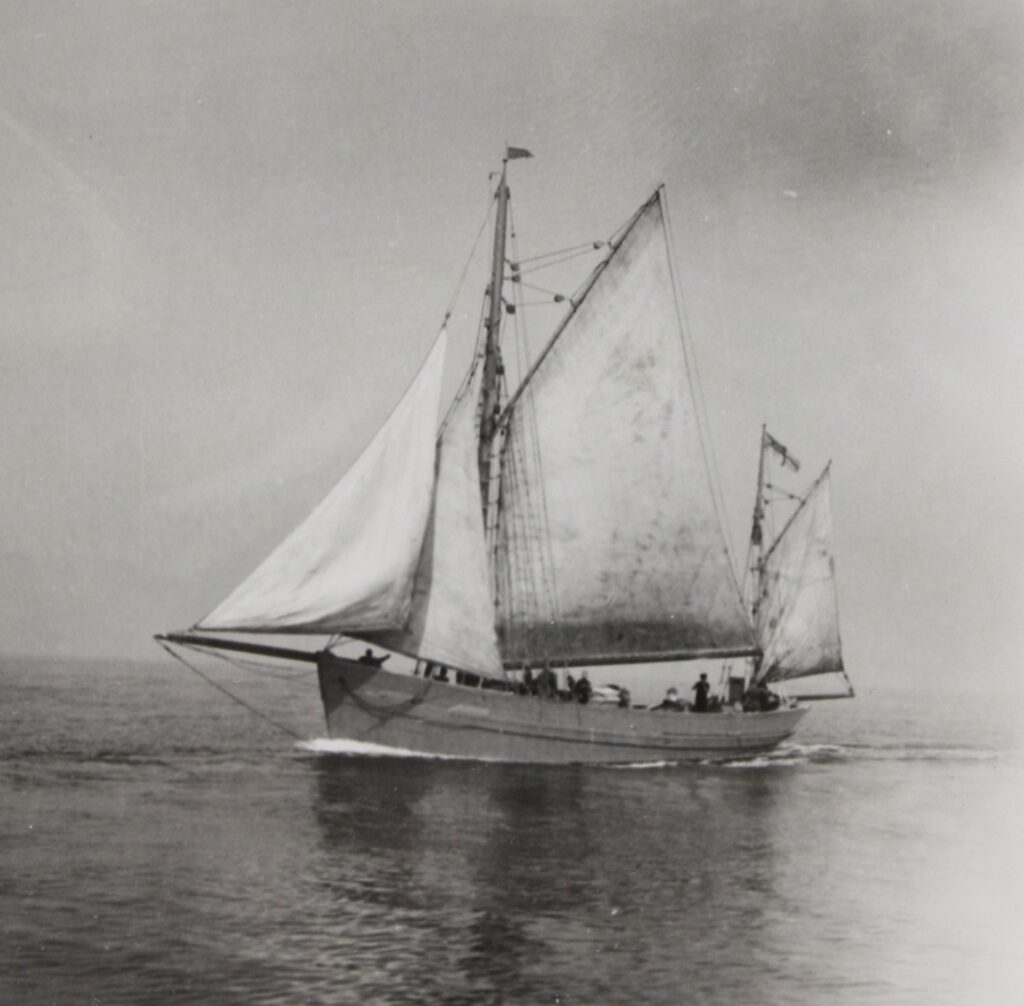
MFV 2013 Mutin (SOE) -a 62ft/60-ton yawl French sailing/auxiliary vessel of the tunny type, suited to working in deep waters which had been used by the French Navy as a sail training ship. The first vessel to be added to the SOE Helford fleet in 1940. Originally the Base ship for the SOE, she was replaced by Roger Juliette when she left for the Mediterranean in November 1942. She returned from the Mediterranean in November 1944 and was handed back to the French on 25 Feb 1945. She is believed still to be in commission in the French Navy as a sail training ship (2025).
MFV 2014 Ste Denise-Louise – a 62ft French sailing aux fishing vessel built in Ostend and therefore deemed unsuitable for work in Brittany. The second vessel to be added to the SOE Helford fleet. she was involved in two operations: an unsuccessful reconnaissance in April 1941 (G3/SR3) and another reconnaissance in May 1942 (MAC) when she was attacked by aircraft. She was severely damaged when she hit a ledge in the Isles of Scilly in 1943. She was re-floated and towed back to Penzance where she was used ‘as a boarding vessel’.
MFV 2017 Sérénini – a 65ft Fecamp trawler – a sailing auxiliary French fishing vessel. She was the third vessel to be added to the SOE Helford fleet. She sailed for the Mediterranean in company with Mutin in November 1942. Her fate is unknown.
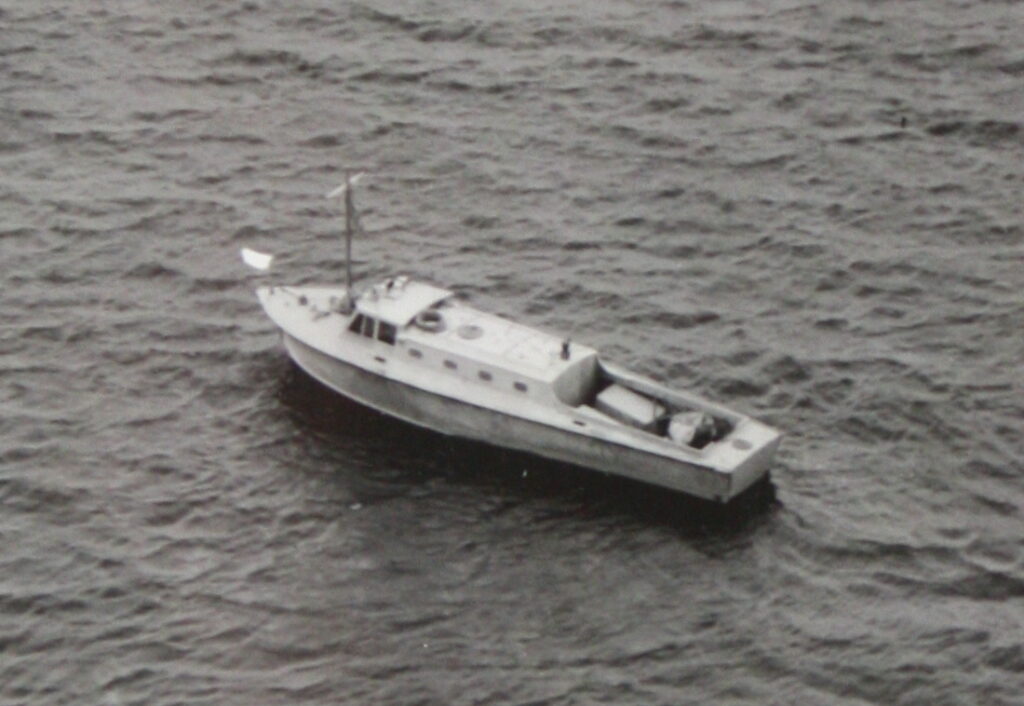
RAF 360 (SOE) – a 41ft 6in RAF air sea rescue launch joined the SOE flotilla in 1940. Although she carried out several missions to France in the early days, she was deemed too slow and lightly defended for cross-Channel operations. She was involved in two early operations: POLISH in September 1941 when she had a rendezvous with Pourquoi Pas and LATAK/OVERCLOUD the following month when she landed two agents. Thereafter, she became the workhorse motor launch of the IPF, being returned to the RAF in Fishguard when the Base closed in March 1945. Bureaucracy caught up with them as there were then questions as to how SOE had ever acquired her in the first place.
Roger Juliette (the spelling varies with some sources using Roger Juliet) – a French ketch/auxiliary coaster. The SOE floating headquarters and accommodation ship until March 1945. Her fate is not known.
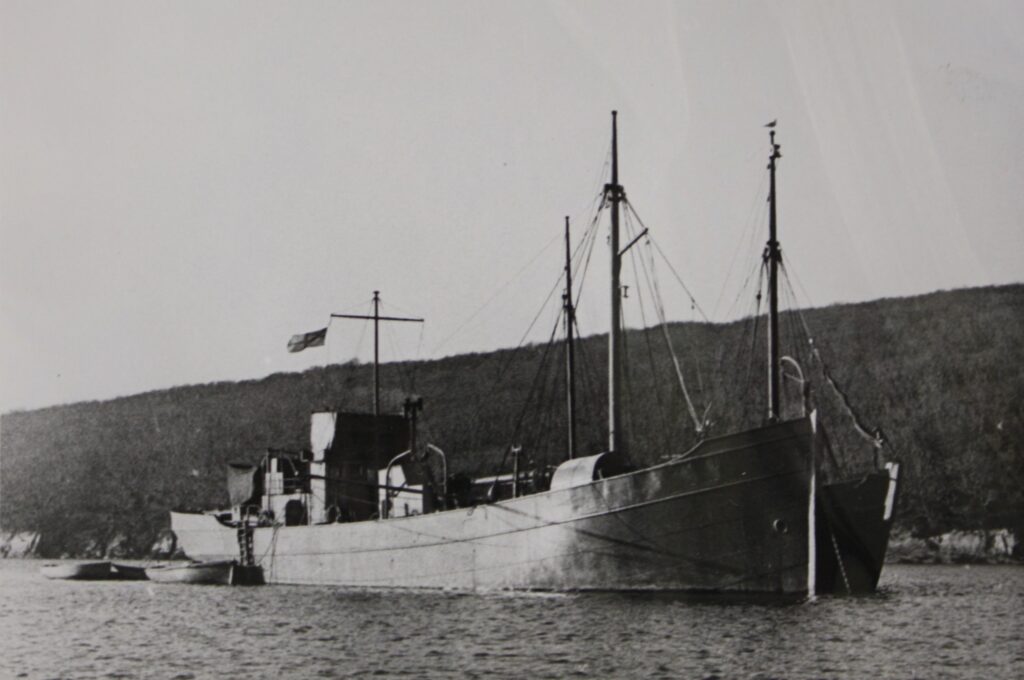
MFV 2020 N 51 /Le Dinan: (SIS) – a 65ft long canoe-sterned malamok/Concarneau trawler. She was involved in five major operations: PILLAR WEST in April 1942 when she established a dead letter box; MARIE LOUISE I & II, in the second of which, McKenzie and Lomenec she rescued the important French agent Remy who brought with him vital plans of the Atlantic Wall defences; and GRENVILLE II and III when she landed an agent and embarked mail. She arrived in the Helford from the Dartmouth flotilla in November 1942 and paid off in December 1944 with Sirène.
MFV 2021 P 11 /Ar Morscoul (SIS) – a Guilvinec sardine pinasse which had escaped from France in June 1940. She was found half-submerged in Newlyn harbour in June 1942, was salvaged and brought into service. She carried out two major rendezvous operations: in August 1942 (GUILLOTINE) and September 1942 (GRENVILLE). In November 1942 she arrived from the Dartmouth flotilla. In September 1944, she made a crossing with MFV 2022 to newly liberated France in operation KNOCKOUT. She remained in the Helford until at least January 1945.
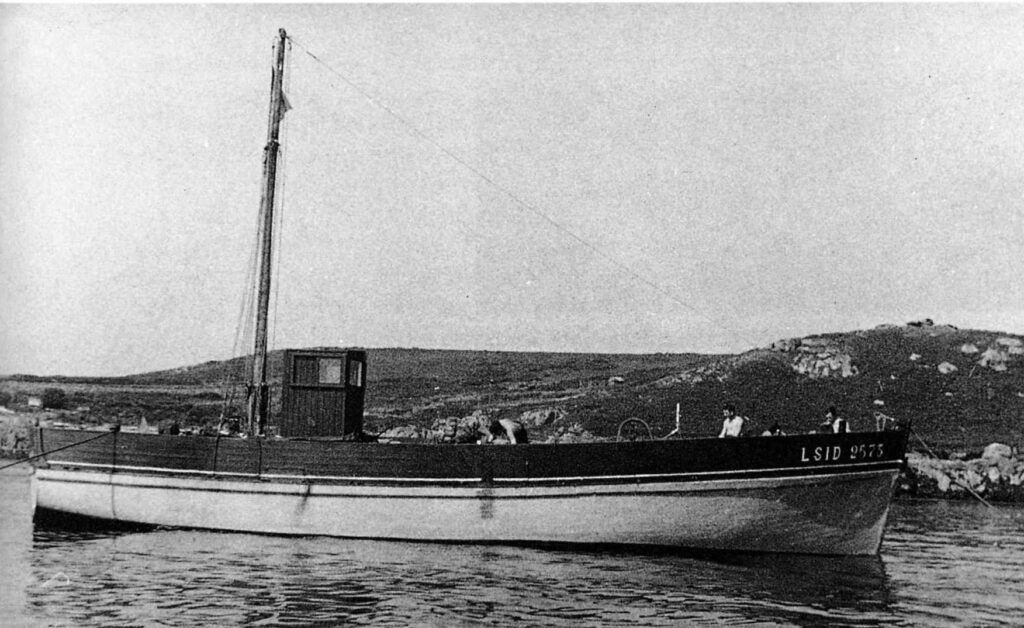
MFV 2022 AO 4/Président Herriot (SIS) – a 60ft malamok. She joined the flotilla around January 1943 and was involved in four major operations: HAWKINS in January 1943 involved embarking agents; RODNEY in February 1943 which collected agents and mail; and two unsuccessful ones INBRED II and INBRED III both in October 1943. In September 1944, she made a crossing to newly liberated France with MFV 2021 in operation KNOCKOUT. She remained in Helford until at least January 1945.
MFV 2023 L’Angèle-Rouge (SIS) – a very interesting vessel. She was not a French vessel but was modelled on P 11/Ar-Morscoul by Laurent Giles to look like an ordinary pinasse above the water. Below the water, she had a flat bottom which, with her powerful 500hp Hall-Scott engines, allowed her to scoot along at 18-20 knots when not being observed. In daylight, she chugged along under a suitably smelly auxiliary engine. She was named after the boss’s secretary: the auburn-haired Miss Sykes-Wright who had recently married Lt McKenzie. She arrived in the Helford in February 1943, She was involved in four major operations: EFFINGHAM in May 1943 when she collected an agent and mail; the unsuccessful JERVIS in June 1943; ANSON in August 1943 when they collected an agent (she spent two months waiting in Scilly as there were 24 changes of date for the operation); and the unsuccessful INBRED I in September 1943. She left the flotilla in July 1944 ‘for Shoreham’.
MFV 2025 Fée-Des-Eaux (SOE) -a malamok/Concarneau trawler which was clearly popular in the IPF. She was found at the same time as MFV 2020 Le Dinan and arrived in the Helford in January 1943. She was involved in one operation (SOOTY) in October/November 1944 when she crossed to Brittany with Jacques Morgand to clear up any old stores left behind at previous landing sites (thus the witty operational name?). She was one of the last to leave in March 1945.

MFV 2026 – Sirène (sometimes Cyrene) (SOE) – a converted 55ft Camaret crabber. She escaped from France in August 1942 and joined the flotilla in the Helford. She paid off in December 1944, being taken round to Hayle by Lt Garnett and later sailed for Camaret via Falmouth on 15 May 1945.
MFV 2027 La Korrigan (sometimes Corrigan) (SOE) – a Guilvinec pinasse, 50ft French trawler. She played an important role in maintaining contact with French fishermen from June 1940 being involved in operation SO2/SLO3 in March 1941. In January 1942 she fled France and arrived in Mevagissey. In December, she was sent to Falmouth, prior to conversion in March/June 1943. She was still in the fleet in September 1944 but her fate is unknown.
MFV 2028 L’Oeuvre (SOE) -a malamok, 65ft French fishing vessel. Arrived in the Helford in November 1943. Delivered a Jeep to the Normandy beachhead in June 1944 and was in the flotilla until at least November 1944.
MFV 2029 – the common name and nature of this vessel is not known. She is first mentioned in the Logbook in August 1943 and left for Milford Haven in September 1943.
MFV 2030 – the common name and nature of this vessel is not known. She is first mentioned in the Logbook in June 1944 when she was being commissioned in Lymington. In January 1945 she was due to sail to Sheerness with MFV 2025 Fée-Des-Eaux but the latter did not leave the Helford until March.
MFV 2031 – the common name and nature of this vessel is not known. She arrived in the Helford from Fowey after fitting-out in September 1943: ‘a fine-looking ship’. The last mention of her in the Logbook is in February 1945 when she may have sailed in company with MFV 2013 Mutin.
MFV 2032 Trebouliste (SOE) – an 80ft, 119 ton, sailing auxiliary French fishing vessel or Mauritanian langoustier. She arrived in Cornwall with 108 men of the French Airforce pilot training establishment. Used as an accommodation and store ship. She is first mentioned in the Logbook in October 1942 and lastly in November 1944. He fate is unknown.

MFV 2045 (formerly FPV 2031) Eduardo – little is known about this vessel which was probably a trawler. She is first mentioned in the Logbook in June 1944 having perhaps arrived from the Mediterranean. She left in September 1944.
HMS Breeze – a 105ft trawler. Arrived to assist with operation PLANIMETER in March 1943 and was still in the Helford in July 1944.
Le Clipper (SOE) – an Ile de Groix sailing tunnyman similar to Mutin but engineless. During operation SHAMROCK in November 1940, she was captured by a submarine – HMS Talisman – and taken to Falmouth. She arrived in the Helford ‘in an extremely dirty condition’ in May 1943 and was used as a store ship. She was handed over to the salvage authorities in November 1943.
Jacques Morgand (SIS) – a 106ft trawler from Dieppe. She arrived in the Helford in July 1943. She was involved in one operation (SOOTY) in October/November 1944 when she crossed to Brittany with MFV 2025 Fée-Des-Eaux to clear up any old stores left behind at previous landing sites (thus the witty operational name?). She was almost wrecked with La Brise in St Ives in January 1945 but returned safely. She sailed for Dieppe from Fowey on 23 May 1945 ‘to be delivered to the French authorities’.
HMY Sunbeam II (SIS) – a splendid, three-masted square-topsail schooner that belonged to Lord Runciman: a near replica of the original Sunbeam in which Lord Brassey had sailed around the world. She acted as the headquarters for the Inshore Patrol Flotilla from June 1943 until March 1945.
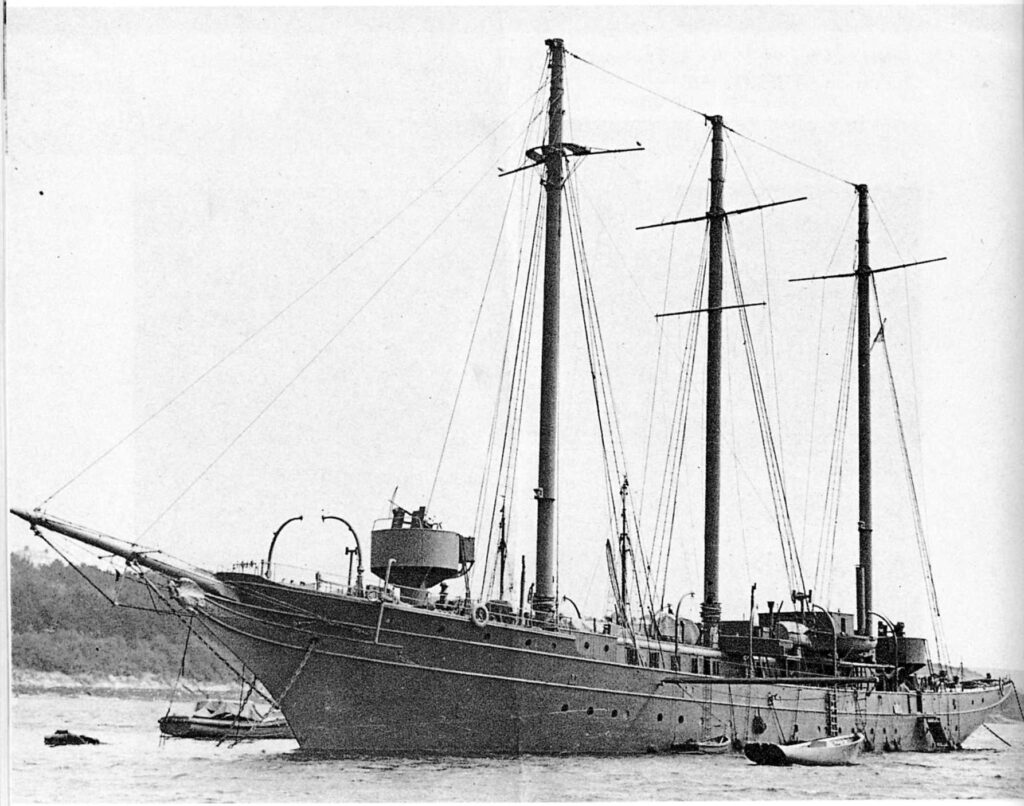
La Brise -a Douarnenez malamok. She was involved in an unsuccessful SIS mission in December 1942 (HATCHET) but then went fishing out of Newlyn. She joined the Flotilla in May 1944 and was wrecked off St Ives in January 1945.2
Pourquoi-pas? (SOE) – a sloop-rigged fishing boat (also referred to as a sand barge) owned by Jacques Guéguen who made several crossings in her in 1940/41 bringing across stragglers from the Allied Expeditionary Force and refugees. Was handed over to Port Navas Boatyard for re-conditioning in February 1945.
